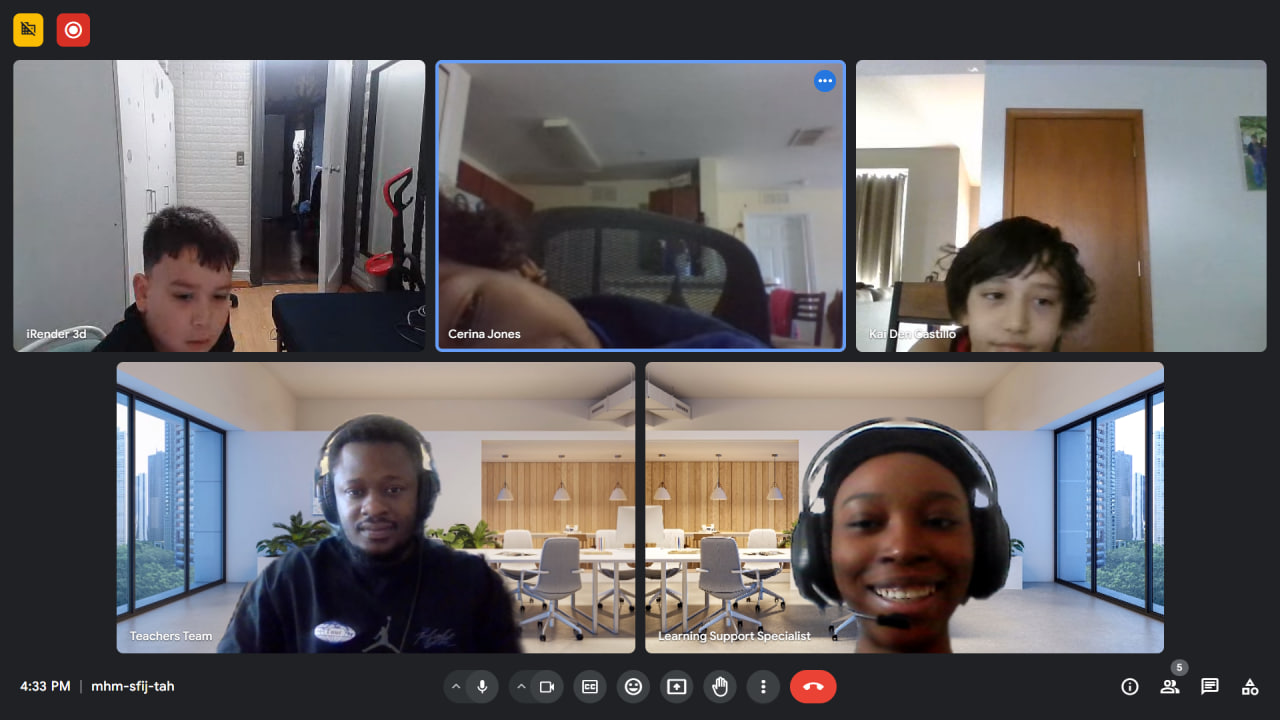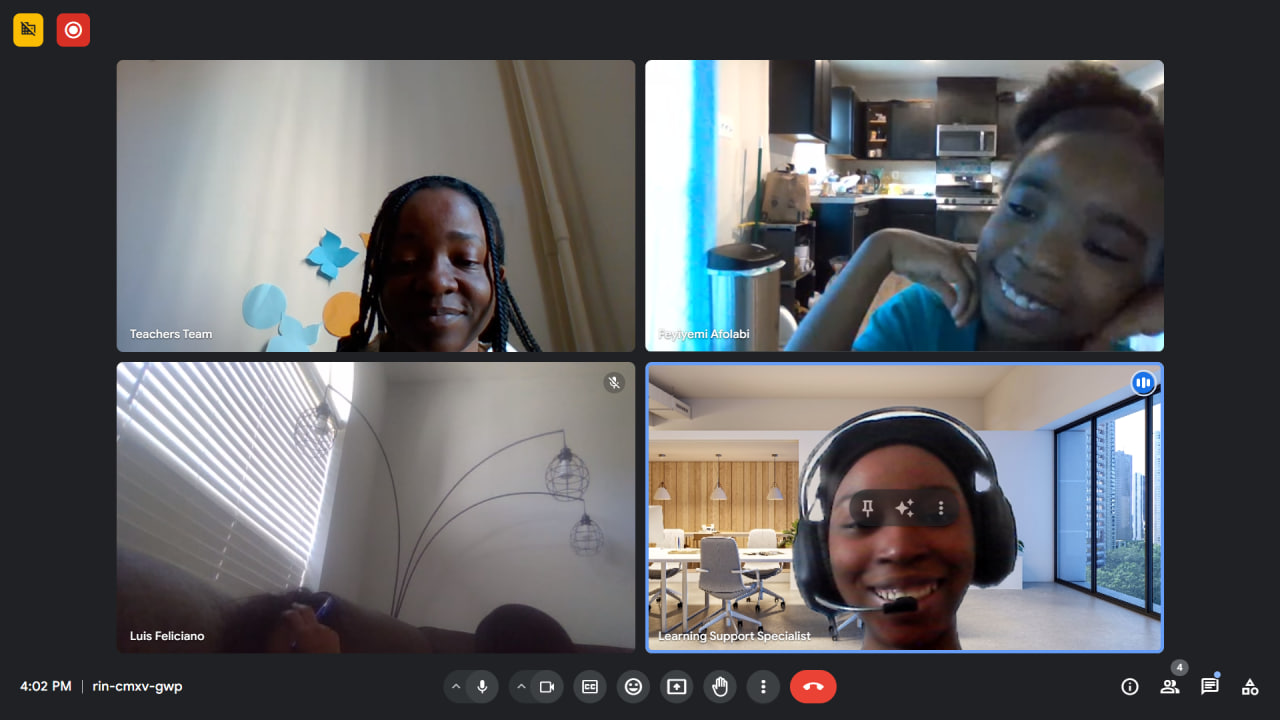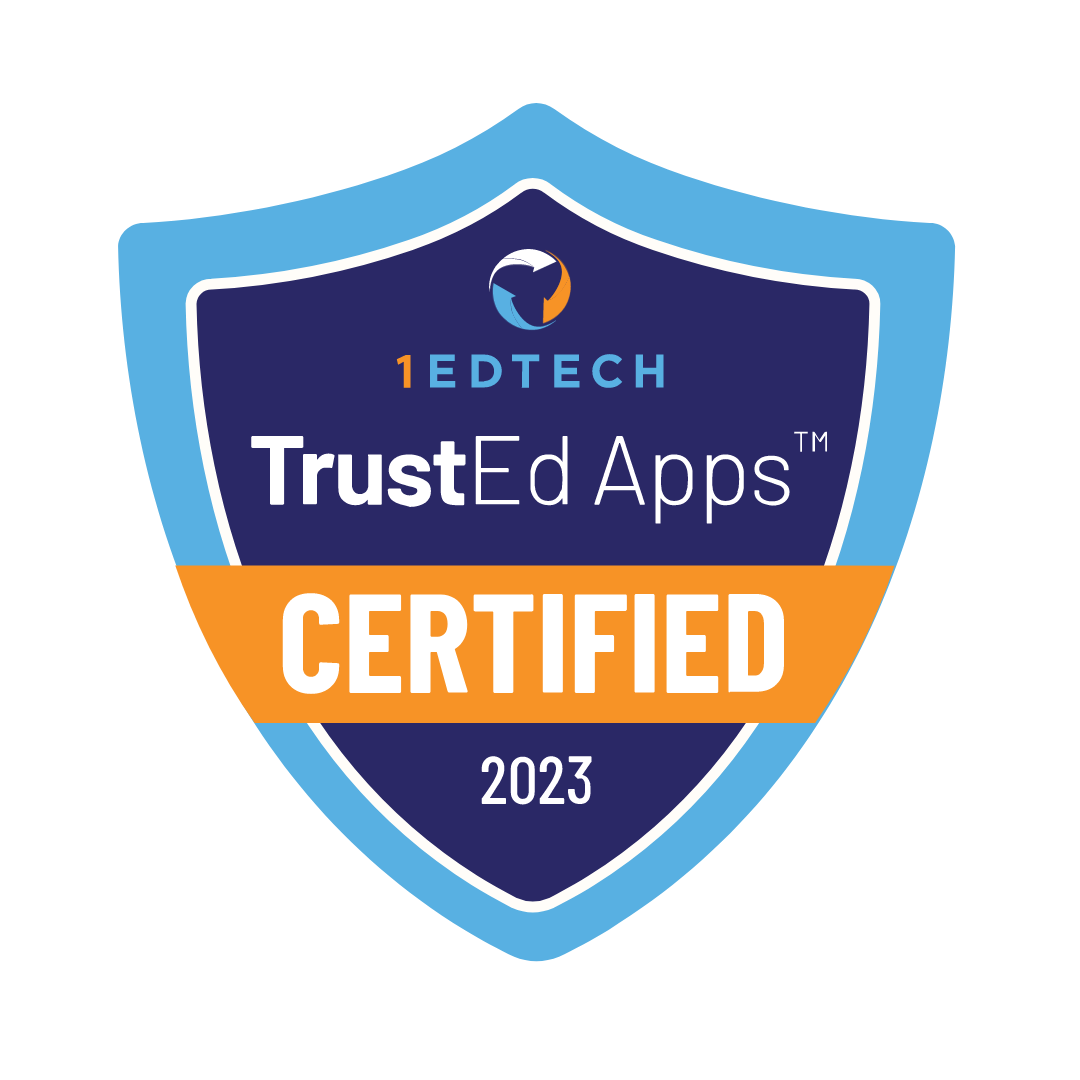Contents
- 1 Let’s talk about Virtual Elementary Schools
- 2 Comparing Traditional and Virtual Elementary Education
- 3 Advantages of Virtual Elementary School
- 4 Role of Technology in Virtual Elementary School
- 5 Communication Between Students and Teachers
- 6 Platforms for Video Conferencing and Collaboration
- 7 Accessing Digital Libraries
- 8 Enhancing the Learning Experience
What is Virtual Elementary School? Virtual Elemental School is an online educational institution specifically designed to meet the needs of elementary school students. It offers a range of classes and programs. These programs can be accessed remotely using virtual platforms and digital tools.
Let’s talk about Virtual Elementary Schools
Virtual elementary schools are new age temples of knowledge, where traditional concrete and brick are replaced by bytes and bandwidth. Online platforms tailor education to the unique needs of each student. Virtual schools offer personalized learning beyond the four walls of traditional classrooms by offering flexible schedules. Flexible schedules improve the work-life balance of both the child and the parent. It also fosters self-discipline from a very young age.
Virtual elementary schools utilize a variety of digital resources: live online classes, interactive learning materials, and educational software. These tools deliver curriculum content and instruction. Instructions like these allow students to complete learning assignments from anywhere where there is an Internet connection. In virtual classes, students can access lessons from their homes or any other location.
One important aspect of virtual elementary schools is flexibility in scheduling and personalized learning. Students have more options in the virtual environment. Virtual classrooms allow them to take control of their schedules and study at the best time for their concentration and personal preferences. Flexibility will be helpful for students who have difficulty in a traditional classroom due to ADHD or social anxiety by tailoring their learning experience to their unique strengths and needs.
For example, a 6th grade student struggles because they have ADHD and cannot concentrate in a regular classroom. A virtual school lets them split learning into shorter, easier parts. This personalized approach in online schooling significantly increases student engagement and achievement.
In addition, virtual elementary schools use adaptive learning technologies. These adaptive features enable personalization of the pace and content. Personalization adapts according to the individual progress and understanding of each student. This personalized approach ensures that students receive individualized support and guidance. Personalization leads to better grades and to a better learning experience.
Let’s take a look at some of the key factors of online learning environments unique from traditional brick-and-mortar and conventional schools.
Legacy Online School provides K-12 programs, which include virtual elementary school as well. Take a look at our “Elementary School” programs. There might be a program for you and your child waiting there!

Comparing Traditional and Virtual Elementary Education
| Traditional schools | Features | Virtual schools |
|---|---|---|
| Strict routine scheduling | Flexibility | Offers schedules that adapt to a student’s lifestyle |
| Large classes and a set, unchanging curriculum | Personalized learning | Tailor learning paths to each student’s strength, weakness, and interest |
| Empathize on in-personal interactions to engage with teachers and students daily | Interactions | Convenient and helpful ways of communicating/collaborating through digital platforms |
Next we’ll delve into the specific advantages that virtual elementary schools offer over traditional ones.
Advantages of Virtual Elementary School
One of the significant advantages of virtual elementary schools is the individualized approach to learning.
Also check out the way we discuss advantages of virtual schools at Legacy Online School.
In a traditional classroom, the teacher is forced to teach at a pace that suits most students. Traditional teaching causes some students to either fall behind or feel like they are failing.
In a virtual class, lessons can be tailored for different learning styles and each student’s pace to avoid fallout or failure. This approach allows students to fully grasp concepts at their own pace, increases their performance, and improves their understanding.
For example, a student who is struggling with math may feel overwhelmed during traditional lessons when the teacher moves on to new lessons and the student is still struggling to understand the previous ones. In a virtual class, such a student can spend extra time on hard concepts to avoid struggle. They can do this without worrying about falling behind since they can pace themself.
This is what makes learning more fun and effective for everyone involved. There are students who are advanced and need constant intellectual stimulation to benefit from individualized instruction, which enhances the educational process. There are students who prefer a slower advancement in any sphere and can take more time on topics they struggle with.
Virtual elementary schools have another advantage: a safe and secure learning environment. It is further underlined by Melanie Arden, who dived deeper into understanding online education and its benefits/drawbacks when touching on young children studying at home. She states on Prodigy below.
“Teachers can set up folders on virtual platforms that contain pre-recorded lessons, multimedia files and other tools to enhance learning because some students learn faster and some students learn slower.”
– Melanie Arden in Prodigy

Health concerns or past bullying can become issues for some students, which makes traditional schools not viable options. Virtual schooling offers these students a safe space without worry. They can learn without fear of health risks or bullying. This safe homeschooling fosters an atmosphere where students can focus on their studies without the distractions from negative experiences in traditional schools.
A student with severe allergies or asthma going to a physical school could be very risky. This is due to exposure to allergens or contagious illnesses existing in in-person communication. By participating in a virtual school, this student can comfortably engage in their studies from home, erasing exposure risk while still receiving a quality education.
Similarly, bullying victims find relief from anxiety and stress. They move from physical environments where the bullying happened to virtual schools where no bullying appears.
Lastly, virtual elementary schools offer more access. They provide education for diverse student groups.

Accessibility
Students residing in remote areas often encounter challenges accessing quality education due to limited availability of schools in their vicinity. Virtual elementary schools bridge this gap of distance and offer these students the chance to get an education without long commutes or moving.
A good example of accessibility would be a rural community with only one small school that is unable to provide certain courses due to budget constraints. A virtual elementary school could add more subjects to its courses that may not be available locally. This would ensure that all students have access to a diverse and enriching curriculum despite geographical constraints.
Virtual elementary schools accommodate students who juggle academic pursuits with other commitments such as artistic endeavors, athletics, or family responsibilities. The online format of education is flexible. It lets these students organize their schedules and gives them the freedom to pursue interests outside of class without harming their education.
A young athlete aiming for proficiency in their sport must dedicate significant time for training and competitions. Enrolling in a virtual school allows them to balance their sports with academics. They can balance them out by making a personal schedule that fits with their training.
Individualized learning, safe environments, and better access are the key advantages for these commitments. They make virtual elementary schools an appealing option for diverse groups of students who need adaptable and tailored educational choices.
With the foundation set for understanding the benefits of virtual elementary schools, it’s essential to explore the pivotal role technology plays in shaping this modern educational landscape.
Role of Technology in Virtual Elementary School
In a virtual elementary school, technology is the foundation of the entire learning experience. It impacts all parts of a student’s education: group projects, interactive lessons, and more.
Down below you can see the importance of technology by genre.
Interactive Lessons
Interactive lessons are at the heart of a successful online classroom. Teachers can create engaging and dynamic learning experiences that mimic the traditional classroom setting through tech tools shown below.
- Educational software
- Virtual whiteboards
- Multimedia presentations.
For example, video conferencing platforms allow real-time engagement. They let students ask questions, share ideas, and join in activities. It’s as if they were in a classroom.
Access to Educational Resources
Technology empowers students with vast digital libraries and a wealth of online resources that enrich their learning journey. Students have access to e-books, tutorials, games, and simulations. These resources cater to their individual learning styles.
This expansive access paves the way for personalized learning experiences while fostering students’ curiosity and independence.

Communication Between Students and Teachers
Effective communication is paramount in any educational setting. In online schools, technology functions as the primary conduit for interaction between students and educators. Students can use technology to ask questions, get feedback, and work with peers.
They do this through messaging platforms, discussion forums, or email. Furthermore, it enables teachers to provide timely support, monitor progress, and maintain an open line of communication with their students.
Lucinda Atwood shares on LinkedIn the role of communication in virtual learning, underlining how it made her a better teacher and improved her time with students.
“Teaching online forced me to focus on content, delivery, engagement, creativity, and meaning-making. […] Online assessment demanded clear expectations, criteria and feedback. I feel a better teacher because of this experience.”
Lucinda Atwood, LinkedIn
Platforms for Video Conferencing and Collaboration
Virtual classrooms rely on video conferencing platforms for live sessions, which serve as a digital replacement for traditional face-to-face instruction. These platforms help groups collaborate by having students work together on projects in real time.
Tools like shared digital whiteboards enable seamless teamwork. They promote critical thinking, problem-solving, and creative expression among students.
Accessing Digital Libraries
Digital libraries are treasure troves of knowledge, where students can discover a plethora of academic materials spanning various subjects. Libraries provide several resources mentioned below.
- E-books
- Scholarly articles
- Videos
- Engaging multimedia.
These all complement the students’ personalized online curriculum.
Educators can enhance the depth and breadth of their lessons while fostering a culture of continuous exploration among students by leveraging these resources.
Enhancing the Learning Experience
The integration of technology in virtual elementary schools fosters an immersive learning environment that transcends geographical boundaries. Students do hands-on activities using virtual labs. They go on virtual field trips to historical sites or museums. They use 3D models to deepen their understanding in subjects like science, history, and geography.
Embracing technology in virtual elementary schools redefines teaching. It also sets the stage for a dynamic and versatile education landscape. Students thrive through interactive lessons, abundant resources, and seamless communication with peers and mentors.
Ensuring Quality With Tutors and Instructors in Virtual Schools
Ensuring that students receive a high-quality education in a virtual elementary school involves evaluating the instructors and tutors. Instructors are those who will be guiding students through their learning journey. Certified teachers and tutors are key to online education and maintaining the standard of learning. Certified educators ensure that students are engaged, supported, and meeting their goals.
Want to see how our teachers look? Check out our website to meet our teachers at Legacy Online School by clicking the link.

What are features of each instructor’s appearance in an online school setting?
| Feature | What do online schools do? |
| Certified Teachers |
|
| Specialized Training |
|
| Tutor Support |
|
| Student Satisfaction Ratings |
|
In summary, quality instruction from certified teachers is key. So is specialized training in online education. And so is dedicated tutoring support. These are the basics for a successful and enriching learning experience in a virtual elementary school.
Check out Legacy Online School programs to find what you need:
- Legacy Online School’s elementary school program sets the bar high. This is a quality education. We strive to ignite curiosity. We also strive to foster creativity. We offer a strong curriculum. We are assisted in this by qualified educators.
- Legacy Online Middle School provides digital education. It is designed for middle school students. The school prides itself on offering live online classes taught by certified teachers. The classes are online and interactive.
- Legacy Online High School is a unique method of online learning carefully designed for high school students. It combines synchronous learning, a wide range of pedagogical methods, and an emphasis on accessibility.
Legacy Online School offers the best curriculum for you and your child to get the best online educational experience.
Our rigorous curriculum ensures that graduates are well prepared for universities and workplaces around the world. In addition, our vibrant virtual clubs connect students all around the world.





